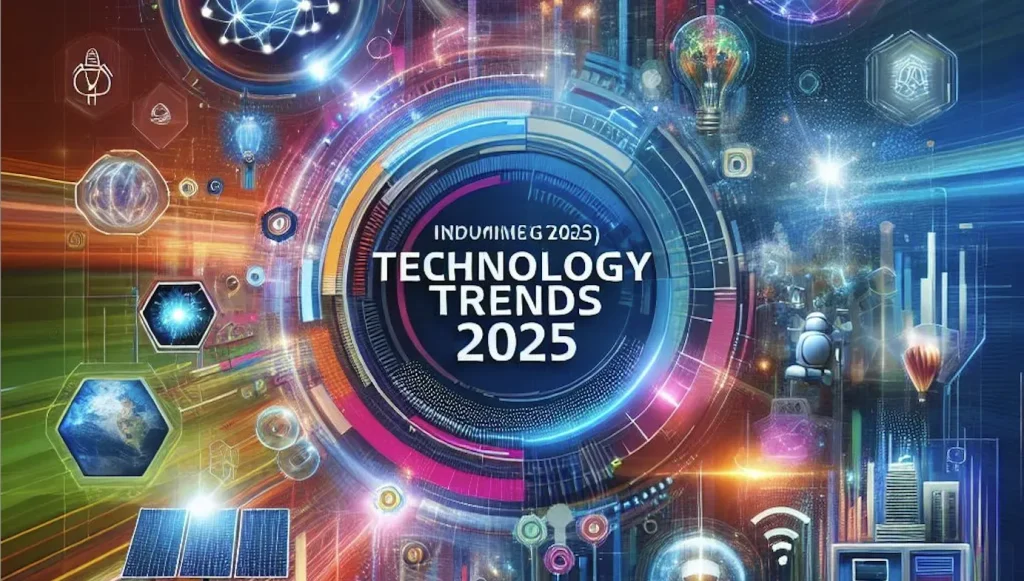Business Analytics with Technology is reshaping how organizations turn data into decisive action. In today’s data-rich environments, data-driven decision making guides strategy as teams blend practical insight with modern analytics. From dashboards to data visualization, the right tools translate raw numbers into clear opportunities. A robust analytics stack helps leaders forecast trends and drive measurable outcomes, with governance and collaboration keeping insight reliable. By placing evidence at the center of planning, organizations unlock value for customers, employees, and stakeholders.
Viewed through an alternate lens, this field is tech-enabled data analytics that link data streams to strategic bets. Organizations rely on predictive analytics, data integration, and interactive dashboards to convert signals into action. Governance, data quality, and cross-functional collaboration ensure insights translate into daily practice. Rather than a collection of tools, analytics becomes a strategic capability that aligns departments and enhances customer outcomes. As markets evolve, the ability to forecast, simulate scenarios, and tell clear data stories with data visualization becomes a competitive differentiator.
Business Analytics with Technology: Aligning Goals and Technology for Growth
In today’s dynamic markets, the smartest organizations align strategic goals with the right analytics stack to turn data into decisions. Business Analytics with Technology brings together data, tools, and human judgment to answer questions that matter—driving growth, efficiency, and risk management. By linking data sources from ERP and CRM to IoT feeds in a unified view, teams adopt a data-driven decision making mindset and leverage analytics technology to inform actions.
When analytics technology is embedded in daily workflows, leadership can anticipate trends, optimize operations, and respond with confidence. Data visualization surfaces patterns quickly; predictive analytics adds foresight into demand, capacity, and customer behavior, helping organizations translate raw numbers into measurable value for customers, employees, and stakeholders.
Analytics Technology Essentials: From Ingestion to Insight
An effective analytics technology stack starts with data ingestion, quality checks, and storage in a data warehouse or data lake. It then layers on analysis and visualization tools that transform raw metrics into business intelligence and accessible dashboards. Data visualization features help both analysts and executives understand performance and extract insights quickly.
Beyond tooling, governance and reliability matter: automated data pipelines, lineage, privacy controls, and security policies ensure trusted numbers. With well-orchestrated data pipelines, teams can deliver timely, trustworthy insights and prepare the ground for predictive analytics and cross‑department collaboration.
From Data to Decisions: Processes that Enable Data-Driven Decision Making
Clear business questions define the analytics journey. Stakeholders outline outcomes and timelines; data engineers and analysts clean and prepare data, apply models, and produce interpretable results. The success of data-driven decision making hinges on translating insights into concrete actions—such as reallocating marketing spend or adjusting operations when signals indicate opportunities or risks.
Organizations then embed insights into dashboards and AI-assisted recommendations that guide daily actions. When data visualization and business intelligence are used across teams, decisions become faster and more aligned with strategic goals.
The Value Proposition: Why Analytics Technology Delivers ROI
Well-executed analytics technology yields higher revenue, lower costs, and improved customer experiences. Visual storytelling through data visualization reveals trends and anomalies at a glance, while predictive analytics provides foresight—forecasting demand, identifying churn risk, and pinpointing bottlenecks before they escalate.
Speed and accuracy of decisions become differentiators in competitive markets. As organizations turn insights into action, governance and privacy safeguards reinforce trust and enable responsible data use.
Best Practices for Sustainable Analytics Programs
To sustain momentum, establish data governance frameworks that define data ownership, quality standards, and security controls. Invest in people: train analysts and business users to read dashboards, interpret model outputs, and communicate insights clearly. Foster cross-functional collaboration so insights from sales, marketing, product, and operations co-create value.
Start small with high-impact pilots, then scale successful models across the enterprise. Measure outcomes with business metrics—ROI, cycle time improvements, and customer satisfaction—to demonstrate the tangible benefits of analytics technology and data-driven decision making.
Real-World Applications and the Future of Analytics Technology
In retail, data visualization highlights changing consumer preferences and informs stock optimization with predictive analytics. In manufacturing, analytics technology enables condition monitoring and proactive maintenance, reducing downtime and extending asset life. In financial services, integrated BI dashboards synthesize risk and performance data to guide pricing and capital allocation.
Across industries, the trend is a disciplined approach to data governance, continuous learning, and flexible analytics technology that adapts to new information. The future emphasizes explainability, ethics, automation, and human oversight so data-driven decisions remain trusted as AI systems mature.
Frequently Asked Questions
What is Business Analytics with Technology and how does it support data-driven decision making?
Business Analytics with Technology is a disciplined approach that combines data, analytics technology, and human judgment to turn raw numbers into decisions that move the business forward. It centers on data-driven decision making by linking data from transactional systems, CRM, IoT, and social listening to clear business questions, with business intelligence tools turning insights into actionable dashboards. By applying the right analytics technology, teams translate insights into actions that improve growth, efficiency, and risk management.
How does analytics technology enable data visualization and business intelligence for decision makers?
Analytics technology provides dashboards, reports, and interactive visuals that translate complex data into understandable insights. Data visualization surfaces trends and anomalies at a glance, helping decision makers spot opportunities and risks, while BI platforms tell a compelling data story to guide actions.
What are the core components of an analytics technology stack that enable predictive analytics?
Core components include data ingestion, data quality checks, a data warehouse or data lake, and analysis and visualization tools. Data pipelines ensure timely, reliable data, so predictive analytics models can produce accurate forecasts and deliver actionable insights through dashboards.
How can organizations implement data-driven decision making using Business Analytics with Technology?
Start with clear business questions, then collect and preprocess data, apply models, and translate results into actions. Integrate insights into daily workflows and dashboards so teams can act in real time, aligning operations with strategic goals.
What are best practices for sustainable analytics programs, including governance, people development, and the role of analytics technology?
Establish data governance with clear ownership and quality standards, and invest in training. Foster cross-functional collaboration, run high-impact pilots, and scale successful models across the enterprise, all while ensuring data security and ethical use of analytics technology.
What is the future of Business Analytics with Technology, including AI, automation, and predictive analytics?
The future blends artificial intelligence with automation to advance predictive and prescriptive analytics. Expect greater emphasis on explainability, ethics, and human oversight, ensuring trusted decisions. Analytics technology will automate insight delivery and integrate into daily workflows to support proactive, data-driven strategy.
| Section | Key Points |
|---|---|
| Introduction | Data alone isn’t enough; success comes from data plus purpose, technology, and actionable insight. Analytics turns raw numbers into decisions that move the business forward. Invest in the right analytics technology and culture to anticipate trends, optimize operations, and respond with confidence. Data translates into measurable value for customers, employees, and stakeholders. |
| 1) The convergence of business goals and technology. | Analytics answers questions that matter to the enterprise; data sources—from transactional systems, CRM, and IoT devices to social listening and third-party feeds—are unified; data-driven decisions align actions with strategic goals; focused insight supports outcomes like growth, efficiency, and risk mitigation. |
| 2) The components of analytics technology that empower decisions. | A modern analytics architecture includes data ingestion, data quality checks, a data warehouse or data lake, and analysis/visualization tools. Data pipelines automate movement and cleaning so numbers are timely and reliable. Dashboards, reports, and interactive visualizations make patterns accessible; governance safeguards accuracy and privacy while enabling cross‑department collaboration. |
| 3) From data to decisions: processes that work. | Begin with clear business questions; define outcomes and timelines. Data professionals preprocess data, apply statistical models or machine learning, and produce interpretable results. Insights must be translated into actions—e.g., reallocating spend or adjusting staffing. Embed analytics in daily workflows with dashboards and AI‑assisted recommendations. |
| 4) The value proposition: why organizations invest in analytics technology. | Yields higher revenue, lower costs, improved customer experiences, and better strategic agility. Data visualization helps spot trends and opportunities; predictive analytics adds foresight—forecasting demand, identifying churn risk, or detecting bottlenecks before they escalate. In competitive markets, quick data‑driven decisions become a differentiator. |
| 5) Best practices for sustainable analytics programs. | Establish data governance with ownership, quality standards, and security controls. Invest in people to read dashboards, interpret models, and communicate insights clearly. Encourage cross‑functional collaboration. Start small with high‑impact pilots, then scale successful models. Measure outcomes with ROI, cycle time improvements, and customer satisfaction. |
| 6) Real-world scenarios and applications. | Retail: reveal changing consumer preferences and optimize stock levels via predictive analytics. Manufacturing: predict equipment failures to reduce downtime. Financial services: dashboards synthesize risk and performance data to inform pricing and capital allocation. Across industries, governance, continuous learning, and a willingness to adjust decisions as new information emerges. |
| 7) Challenges to navigate and how to overcome them. | Adoption hurdles include data silos, inconsistent data quality, and gaps between IT and business teams. Address by aligning incentives with data‑driven outcomes, implementing data stewardship, and providing data literacy training. Security and privacy must be embedded throughout the analytics lifecycle. When teams partner with technology thoughtfully, analytics scales. |
| 8) The future of Business Analytics with Technology. | AI and automation blend to support smarter recommendations and autonomous decision streams. Models evolve from simply reporting what happened to predicting what will happen and prescribing what to do next. Explainability, ethics, and human oversight will remain essential to ensure trusted, responsible decisions. |
| Conclusion | Business Analytics with Technology is a disciplined approach to turning data into decisions that drive real results. Integrate data sources, apply rigorous analytics, and embed insights into everyday workflows to unlock data‑driven decision making. The most successful teams combine precision with collaboration, governance, and continuous improvement. As AI, machine learning, and data visualization advance, the ability to convert data into actionable strategies will grow ever more essential. Embrace the analytics journey, invest in people and platforms, and let data guide your path to smarter decisions and lasting impact. |
Summary
Business Analytics with Technology is a disciplined approach to turning data into decisions that drive real results. By integrating data sources, applying rigorous analytics, and embedding insights into everyday workflows, organizations unlock the power of data-driven decision making. The most successful teams combine the precision of analytics technology with a culture that values collaboration, governance, and continuous improvement. As AI, machine learning, and data visualization continue to advance, the ability to convert data into actionable strategies will only grow more essential. Embrace the analytics journey, invest in people and platforms, and let data guide your path to smarter decisions and lasting impact.


